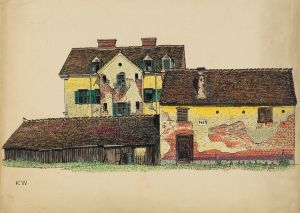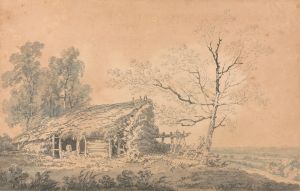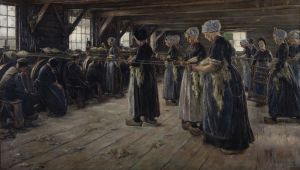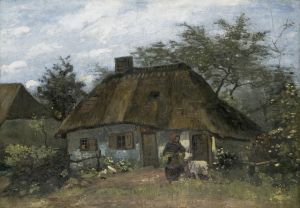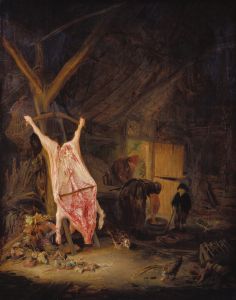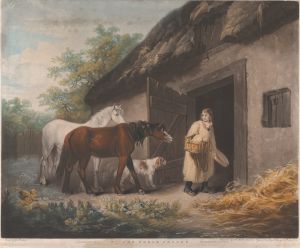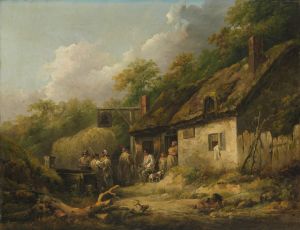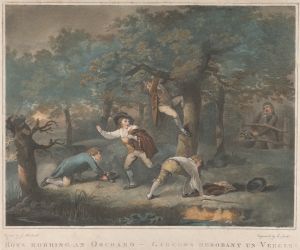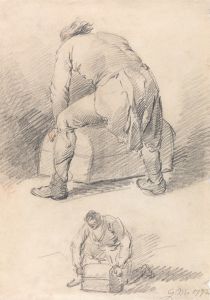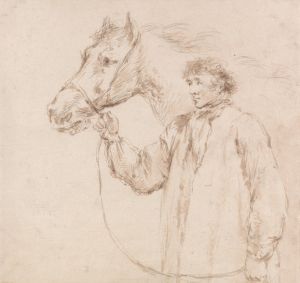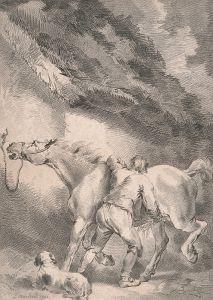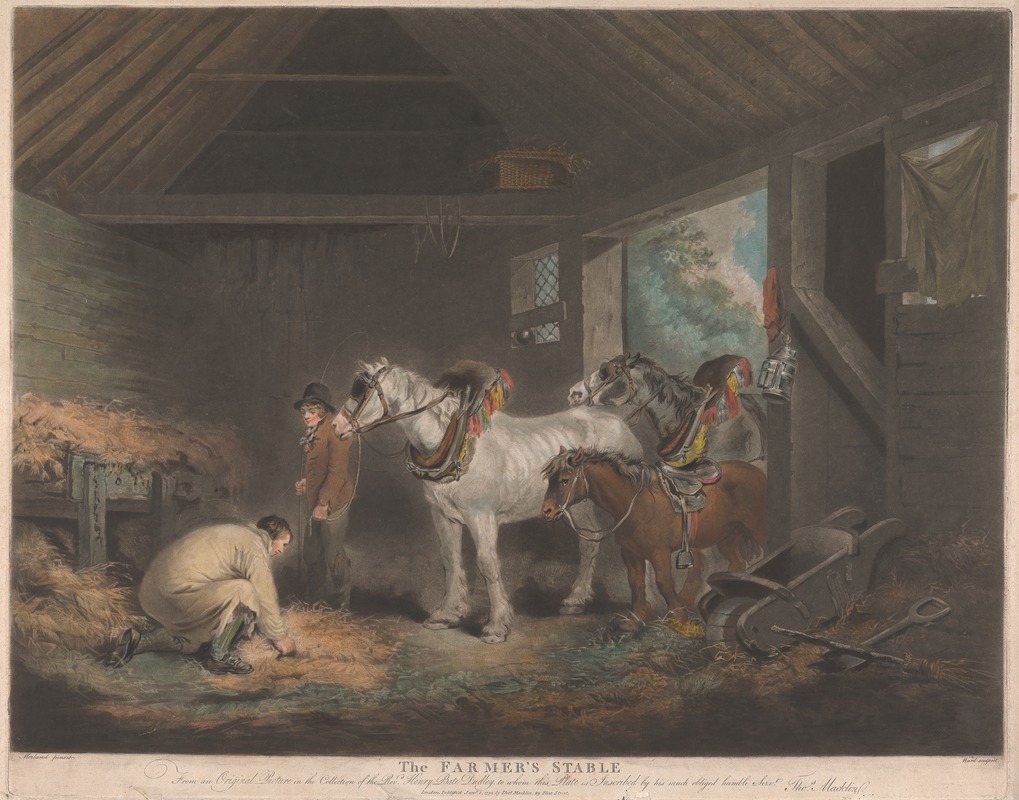
The Farmer’s Stable
A hand-painted replica of George Morland’s masterpiece The Farmer’s Stable, meticulously crafted by professional artists to capture the true essence of the original. Each piece is created with museum-quality canvas and rare mineral pigments, carefully painted by experienced artists with delicate brushstrokes and rich, layered colors to perfectly recreate the texture of the original artwork. Unlike machine-printed reproductions, this hand-painted version brings the painting to life, infused with the artist’s emotions and skill in every stroke. Whether for personal collection or home decoration, it instantly elevates the artistic atmosphere of any space.
George Morland was an English painter known for his rustic and rural scenes, often depicting the everyday life of the countryside. One of his notable works is "The Farmer’s Stable," which exemplifies his skill in capturing the essence of rural England during the late 18th century.
"The Farmer’s Stable" is a painting that showcases Morland's ability to portray the simplicity and charm of rural life. The artwork typically features a stable scene, where the focus is on the interaction between humans and animals, a common theme in Morland's work. His paintings often include elements such as horses, farmhands, and the rustic architecture of the countryside, all rendered with a keen eye for detail and a deep appreciation for the subject matter.
George Morland was born in London in 1763 into a family of artists. His father, Henry Robert Morland, was also a painter, and George was trained in the arts from a young age. By the time he was a teenager, Morland was already exhibiting his work and gaining recognition for his talent. He became known for his ability to capture the nuances of rural life, which was a popular subject during this period in England.
Morland's work is often associated with the Romantic movement, which emphasized emotion and individualism, as well as a glorification of the past and nature. His paintings reflect a nostalgic view of rural life, often idealizing the simplicity and tranquility of the countryside. This was in contrast to the rapidly industrializing world of 18th-century England, where urbanization was beginning to change the landscape and way of life.
"The Farmer’s Stable" is a testament to Morland's ability to convey a narrative through his art. The composition of the painting typically draws the viewer's eye to the central figures, often a farmer and his animals, set against the backdrop of a stable. The use of light and shadow in the painting adds depth and dimension, highlighting Morland's technical skill and his understanding of the interplay between light and form.
Throughout his career, Morland was prolific, producing a large number of paintings, many of which were engraved and widely distributed. This helped to cement his reputation as one of the leading artists of his time. Despite his success, Morland's life was marked by personal struggles, including financial difficulties and issues with alcohol, which ultimately affected his health and productivity.
George Morland's work, including "The Farmer’s Stable," continues to be appreciated for its artistic merit and its depiction of a bygone era. His paintings offer a window into the rural life of 18th-century England, capturing the beauty and simplicity of the countryside with a sense of authenticity and warmth. Morland's legacy as an artist endures, with his works held in various collections and museums, admired for their contribution to the Romantic movement and their portrayal of rural England.





